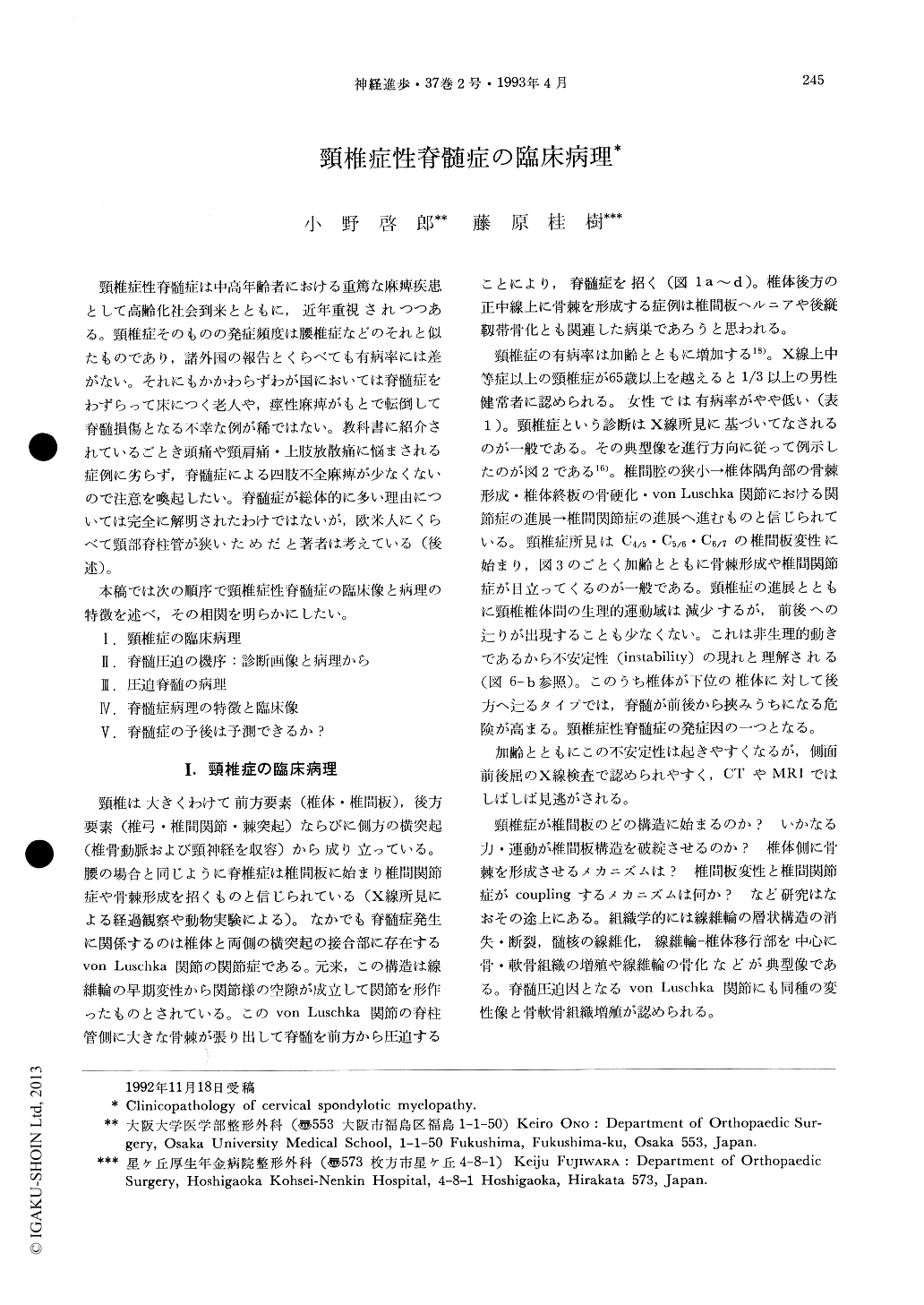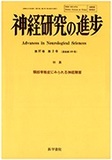Japanese
English
- 有料閲覧
- Abstract 文献概要
- 1ページ目 Look Inside
頸椎症性脊髄症は中高年齢者における重篤な麻痺疾患として高齢化社会到来とともに,近年重視されつつある。頸椎症そのものの発症頻度は腰椎症などのそれと似たものであり,諸外国の報告とくらべても有病率には差がない。それにもかかわらずわが国においては脊髄症をわずらって床につく老人や,痙性麻痺がもとで転倒して脊髄損傷となる不幸な例が稀ではない。教科書に紹介されているごとき頭痛や頸肩痛・上肢放散痛に悩まされる症例に劣らず,脊髄症による四肢不全麻痺が少なくないので注意を喚起したい。脊髄症が総体的に多い理由については完全に解明されたわけではないが,欧米人にくらべて頸部脊柱管が狭いためだと著者は考えている(後述)。
本稿では次の順序で頸椎症性脊髄症の臨床像と病理の特徴を述べ,その相関を明らかにしたい。
The principal etiology of cervical spondylotic myelopathy was diffuse compression of the spinal cord caused by spondylotic protrusion, especially at the von Luschka joints. Developmental canal stenosis (anteroposterior canal diameter <13mm) and dynamic instability (retrolisthesis and/or anterior listhesis of the vertebrae) were two major factors responsible for the increased severity of myelopathy. In cadaver specimens with this condition, a decrease in the transverse area of the spinal cord and the compression ratio (the ratio of the anteroposterior to the lateral cord diameter) was observed, and both parameters showed good correlation with the severity of cord degeneration. A cross-sectional study of the spinal cord revealed that the white matter was more vulnerable to mechanical compression than the gray matter. Secondary to the lateral columns, the dorsal columns suffered from mild to moderate compression. The lateral columns include the corticospinal and spinotharamic tracts, and involvement of these tracts produced spastic paralysis and disturbance of pain and temperature sensation below the level of the lesion. Regardless of involvement of the dorsal column, position and vibratory sensation were relatively well preserved. Spongy degeneration, demyelination, gliosis, and ascending or descend-ing Wallerian degeneration were characteristic findings in these columns. Anterior horn cell loss or infarction of the gray matter was associated with severe compression. Finally, even when the entire lateral and dorsal columns were destroyed, the anterior columns were spared. However, in a patient diagnosed as cervical spondylotic amyotrophy, unusual pathological changes were found ; despite com-plete infarction of the gray matter extending over several segments, the white matter was well preserved. The neurological picture before death was characterized by muscle wasting in both forearms and hands without spastic paralysis, which corresponded to the pathological findings.

Copyright © 1993, Igaku-Shoin Ltd. All rights reserved.


